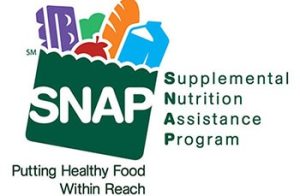<p>By Steve Markenson, Vice President, Research & Insights, FMI </p><img src="https://www.fmi.org/images/default-source/blog-images/supply-chain-forum-trucking.tmb-large-350-.png?sfvrsn=c243b14c_1" style="float:right;margin:10px;" alt="Supply Chain Forum Trucking" class="-align-right" sf-size="100" /><p>The food industry has learned countless supply chain lessons in recent years and companies are putting strategies in place to ease the challenges. The result is that there is some light at the end of the long supply chain tunnel.</p><p>Going back to the early days of the COVID-19 pandemic and for almost a year, out-of-stocks due to high demand and supply chain disruptions were a concern. This played on the minds of shoppers into 2022, until inflation worries overtook these out-of-stock anxieties. But throughout 2022, almost one-half of grocery shoppers still reported concerns about items not being available, all according to FMI’s <a href="https://www.fmi.org/our-research/research-reports/u-s-grocery-shopper-trends"><i>U.S. Grocery Shopper Trends</i></a><i>. </i>These anxieties reflect reality as food retailers reported their average out-of-stock rates in 2022 at 10.7%, down only slightly from 11.3% in 2021, and higher than the more typical historical rate of 8%, according to FMI’s <i>The Food Retailing Industry Speaks 2023 (Speaks) </i>to be released in July. </p><p>Food retailers and suppliers are in almost universal agreement that supply chain issues had a negative impact on their businesses in 2022. There was also a high level of agreement that the lack of trucking or transportation capacity was a major factor. But the reasons go beyond that to include workforce issues and disruptions in the availability of raw materials, as a result of weather, the war in Ukraine and volatile consumer demand. Retailers and suppliers both point to collaboration as an effective tool to help overcome hurdles. The industry is signaling hope that supply chain disruptions will lessen as 2023 progresses. Less than half of food retailers (44%) and suppliers (32%) believe supply disruptions will negatively impact their businesses in 2023 according to <i>Speaks 2023</i>. </p><p>Food industry companies are working to bring more efficiencies and reduce redundancies to the supply chain. Many retailers and suppliers point to collaboration with trading partners as an effective strategy to help overcome the hurdles. The industry is optimizing product mixes to create openings for enhanced innovation. The industry is also preparing to bring more creative approaches to product assortments to better engage customers. </p><p>Further insights into what is happening with the supply chain will be forthcoming in July when FMI releases the <i>Supply Chain Benchmarking </i>report, conducted in conjunction with the Boston Consulting Group. This biannual report takes an in-depth look at key supply chain metrics for the food industry related to service, cost, warehouse performance, logistics performance and inventory. The study has served as a valuable tool to help the industry benchmark, assess the state of the supply chain and identify opportunities for improvement.</p><p>The <i>Supply Chain Benchmarking</i> research and many of the approaches mentioned above and more will be discussed at the <a href="https://www.fmi.org/forms/RedirectForm/?dest=https%3A%2F%2Fwww.fmi.org%2Fsupply-chain-forum&utm_campaign=supplychainforum23&utm_source=blog_SCF%202023_June2023&utm_medium=blog">FMI Supply Chain Forum, September 26-28, 2023, in Addison, Texas.</a></p>
[#item_full_content]






